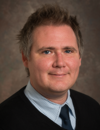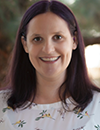08:00 | Morning Coffee and Pastries in the Exhibit Hall |
09:00 |  | Conference Chair Welcome and Introduction by Conference Chairperson
John Hundley Slater, Associate Professor of Biomedical Engineering, University of Delaware, United States of America
|
|
09:30 |  | Keynote Presentation Scalable, Consistent and Cost-Effective: Addressing the Challenges of Manufacturing Human Cells, Tissues and Organs
Thomas Bollenbach, Chief Technology Officer, Advanced Regenerative Manufacturing Institute (ARMI, BioFabUSA, United States of America
Decades of basic research into the biological basis and therapeutic value of stem cells, tissues and organs has laid the technical foundations for a revolution in medicine. However, that revolution continues to lie just around the corner due mainly to challenges associated with scalable, consistent, cost-effective manufacturing. The mission of BioFabUSA is to make practical the scalable, consistent and cost-effective manufacturing of cells, tissues and organs by investing strategically an $80MM award from the Department of Defense in collaboration with nearly 180 industry, academic, not-for-profit and government stakeholders. These stakeholders are driving the industry towards scalable, modular, automated and closed (SMAC) manufacturing systems, which are being developed and demonstrated in the context of ligament, skin, skeletal muscle, bone, pancreatic islet, and retinal progenitor epithelial cell production processes. These SMAC systems are being augmented by technology development projects, designed to fill gaps and augment current bioprocess equipment with platforms for novel non-destructive sensors, platforms for chemically-defined media formulation and for new types of preservation methods. These systems are also supported through the institute’s deep tissue characterization core, which enables big data-driven Quality by Design process development for scalability and GMP-readiness. Given the regulatory constraints of translating these products to patient use, BioFabUSA complements its technology development activities with a robust regulatory program, which includes a public private partnership agreement with CBER. This PPP is paving the way to smoother regulatory pathways for complex advanced therapies. |
|
10:00 | ElastoSens(TM) Bio: A Smart and Non-Destructive Analytical Instrument for the Viscoelasticity Characterization of Soft Biomaterials
Dimitria Bonizol Camasao, Senior Application Scientist, Rheolution, Canada
Kathleen Duffy, Director of Life Sciences, Rheolution, Canada
In this presentation, the speakers will introduce an innovative non-destructive viscoelasticity testing platform (ElastoSensTM Bio) that is bridging the gap on the benchtop in the research and fabrication of soft and often complex biomaterials. They will provide compelling studies performed with the ElastoSensTM Bio that highlight important data that this instrument can extract from soft samples and why this information is valuable in the context of their applications (hydrogel formulation, tissue engineering, 3D printing, drug delivery systems, blood coagulation, and hemostatic agents) for R&D, product development and/or quality insurance and process control. ElastoSensTM Bio is a smart, cell-friendly and affordable viscoelasticity testing instrument and is the first non-destructive modular testing solution that enables streamlined analytics on viscoelasticity, swelling, temperature and photostimulation data in real-time. |
10:30 | Mid-Morning Coffee Break and Networking |
11:00 |  | Keynote Presentation Engineering Ex Vivo Models of Brain Cancer
Stephanie Seidlits, Associate Professor, Biomedical Engineering, University of Texas at Austin, United States of America
The Seidlits lab works to design matrix-mimetic biomaterials for engineering tissues of the central nervous system (CNS). We work with hyaluronic acid (HA), a major component of the extracellular matrix (ECM) in the CNS, as a base material to create ex vivo models of brain and tumor tissues. I will discuss our work modeling glioblastoma (GBM), the most lethal, yet common, cancer originating in the brain. We have developed HA-based culture platforms that provide a controlled experimental context in which to characterize how the ECM microenvironment facilitates GBM tumor aggression. These biomaterial-based cultures of patient-derived GBM cells can model several aspects of clinical tumors, including kinetics of acquired resistance to chemotherapies, metabolic changes, and vasculature-associated infiltration. |
|
11:30 | Engineering Organ-Specific Microvasculature for Regeneration and Disease Modeling
Ying Zheng, Associate Professor, Department of Bioengineering, University of Washington, United States of America
Engineered tissues have emerged as promising new approaches to repair damaged tissues as well as to provide useful platforms for drug testing and disease modeling. Obstacles remain to recreate organ-specific vasculature and tissue environment for disease modeling. In this talk, I will present our progress in generating complex vascular structure with large range of diameters and curvatures, by combining multiple fabrication tools, to support its remodeling, thick tissue growth and blood perfusion. I will present means to study organ-specific vascular structure and function. I will summarize the remaining challenges and perspective in exploiting engineering tools to advance our understanding of biology and medicine. |
12:00 | Networking Lunch |
13:00 | Establishing Saccharomyces Boulardii as an In-Gut Biomanufacturing Platform
Nathan Crook, Assistant Professor, North Carolina State University, United States of America
Deniz Durmusoglu, Researcher, North Carolina State University, United States of America
Saccharomyces boulardii is a widely used yeast probiotic, demonstrating effectiveness against various gastrointestinal disorders. S. boulardii is therefore a promising chassis for development of personalized engineered probiotic medicines. In this talk, I will discuss our lab’s recent progress in optimizing both small molecule and peptide biosynthesis in this strain, as well as our efforts to enhance S. boulardii’s in vivo residence time. Last, I will discuss some new work from our lab focusing on the development of gut- and small-molecule inducible promoters for this organism. Taken together, this work establishes S. boulardii as a genetically tractable commensal fungus and demonstrates the delivery of therapeutics during colonization. |
13:30 | Biofabrication of Heart Tissues using Cardiac Spheroids and 3D Bioprinting Technology for in vitro and in vivo Applications
Carmine Gentile, Lecturer in the School of Biomedical Engineering, University of Technology Sydney, Australia
3D bioprinting technology has emerged in the past 15 years as a tool for the bioengineering of human tissues and organs. In this approach, bioinks containing tissue-specific cells are deposited within permissive hydrogels to 3D bioprint viable and functional tissues. Dr Gentile’s team has developed cardiac bioinks by co-culturing cardiac cells in 3D as cardiac spheroids, which are then embedded in specialized hydrogels. 3D bioprinted heart tissues are viable, highly vascularized and contract synchronously when electrically paced. They are currently used for in vitro drug discovery and toxicity studies, for disease modeling of myocardial damage (i.e., heart attack in a Petri dish) and for cardiac regeneration purposes in vivo. Given their unique features in recapitulating the microenvironment typical of the human heart and its pathophysiology, 3D bioprinted heart tissues have the potential to be used to both prevent and treat cardiovascular disease in patients. |
14:00 | Combining Magnetically-assisted Electrospinning with Photoconjugation to Create Multi-Gradient Biomaterials
Julianne Holloway, Assistant Professor of Chemical Engineering, Arizona State University, United States of America
There have been significant advances within tissue engineering; nonetheless, translation has proven difficult with ongoing challenges regenerating complex tissues with a heterogeneous structure and multiple cell types. For example, the interfacial tissue between adjacent tissues (e.g. tendon-bone, ligament-bone, cartilage-bone) has complex gradients of structure, cell type, and chemical composition. Designing biomaterial scaffolds that mimic the heterogeneous properties of these interfacial tissues is vital for spatially controlling cell behavior and promoting functional tissue regeneration. Towards this aim, we have developed an innovative manufacturing technique to selectively and precisely control gradients in fiber alignment and chemistry. First, magnetically-assisted electrospinning was used to control fiber alignment. Electrospun fibers were highly aligned in the presence of a magnetic field and transitioned to randomly aligned fibers away from the magnetic field. Using different magnet configurations, we were able to spatially control the degree and direction of fiber alignment. Second, post-electrospinning photoconjugation was used to create gradients in fiber chemistry. To mimic the mineralization gradient present in the tendon-bone interface, we conjugated a calcium-binding peptide to the fibrous scaffold. Following incubation in simulated body fluid, mineralization selectively occurred only in areas where the calcium-binding peptide was present. Combined, these two techniques provide precise spatial control over fiber alignment and mineralization to create dual gradient fibrous scaffolds that mimic the tendon-bone interface. |
14:30 |  | Keynote Presentation 3D Bioelectronics Tissue: A New Paradigm via Bioprinting
Wai Yee Yeong, Professor, School of Mechanical & Aerospace Engineering, Nanyang Technological University, Singapore
Electricity is important in the physiology and development of most human tissues. Neural, muscular, and cardiac cells communicate among themselves via electrical signals. Electrical stimulation can activate many intracellular signaling pathways, and influence intracellular microenvironment, as a result, affect cell migration, cell proliferation, and cell differentiation. Conventional tissue-electronics interfaces has been demonstrated generally via mechanical coupling approaches such as using external electrode across 2D cell surface to create an electrical field, inserting an array of standalone microelectrode network through a target tissue, or seeding cells on 3D scaffolds made with conductive materials. Bioprinting has the potential of creating a new paradigm in the development of freeform 3D bioelectronics tissue. Bioprinting technologies provide the freedom to assemble different type of materials, living and functional nanomaterials, on-demand within a single multi-materials system. In this talk, we will discuss about bioprinting of cells and functional materials, paving the way to achieve a tissue-electronics interface system through 3D printing. |
|
15:00 | From Bench to GMP Production: Limitations and Pitfalls during Process Transfer of Viral Vectors for Gene Therapies
Ryan Schweller, Senior Scientist, Upstream Process Development, FUJIFILM Diosynth Biotechnologies, United States of America
Cell and gene therapies continue to offer new and innovative approaches to address a myriad of conditions ranging from cancer to ultra-rare genetic disorders. In recent years, important advancements in the development of gene therapy products have been driven by the identification and understanding of new gene delivery vectors. As with most novel therapeutic platforms, the process development, manufacturing and characterization of gene therapy products present unique challenges. At FUJIFILM Diosynth Biotechnologies, we work with many clients, ranging from small biotech start-ups and academic institutions to large pharma, to develop scalable processes to support pre-clinical, clinical, and eventual commercial manufacture of viral vector-based gene therapies and vaccines. However, consistent pitfalls exist across this technology transfer process that can significantly affect project timelines. This presentation will describe the critical steps to transfer processes from the laboratory to GMP manufacturing, highlighting the key factors and often overlooked requirements that could impact successful execution of a project. We hope to initiate new discussions that could help accelerate future therapies to market. |
15:30 | Close of Programming |



